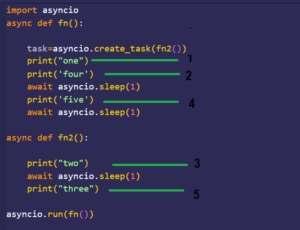Navigating the Depths of Data Loss and Corruption in Laptops: A Comprehensive Guide

In the digital age, laptops serve as repositories for vast amounts of valuable data, including documents, photos, videos, and personal files. However, despite the advancements in storage technology and data management, users are still susceptible to the perils of data loss and corruption. Whether due to hardware failures, software glitches, human error, or malicious attacks, data loss and corruption can have devastating consequences, ranging from inconvenience to financial loss and irreparable damage. In this extensive guide, we will explore the common causes of data loss and corruption in laptops, examine their potential impacts, and provide practical solutions to mitigate these risks and safeguard valuable data.
Understanding Data Loss and Corruption:
Data loss and corruption refer to the inadvertent or intentional destruction, alteration, or loss of data stored on a laptop’s storage device. These incidents can occur due to various factors, including:
- Hardware Failures: Malfunctioning hard drives, solid-state drives (SSDs), or other storage components can result in data loss or corruption due to physical damage, mechanical wear, or electronic failure.
- Software Glitches: Incompatible software updates, system crashes, file system errors, or malware infections can lead to data loss or corruption by disrupting the integrity of stored data or preventing access to files.
- Human Error: Accidental deletion, formatting, or overwriting of files, improper handling of storage devices, or careless use of software applications can result in irreversible data loss or corruption.
- Malicious Attacks: Cyberattacks such as ransomware, viruses, or phishing scams can target laptops to encrypt files, steal sensitive information, or delete data, leading to data loss or corruption.
Common Causes of Data Loss and Corruption:
Data loss and corruption in laptops can be attributed to various causes, including:
- Physical Damage: Drops, spills, overheating, or exposure to extreme temperatures can damage the laptop’s storage device, leading to data loss or corruption.
- File System Errors: Corruption or fragmentation of the file system structure can prevent the operating system from accessing or retrieving stored data, resulting in data loss or corruption.
- Power Outages: Sudden power outages or improper shutdowns can interrupt data write operations and cause file system corruption or data loss on the laptop’s storage device.
- Virus and Malware Infections: Malicious software programs such as viruses, Trojans, or ransomware can infect the laptop and corrupt or delete files, leading to data loss or compromise.
- Software or Hardware Malfunctions: Incompatible software updates, driver conflicts, or hardware failures can disrupt data storage and retrieval processes, resulting in data loss or corruption.
Diagnosing and Recovering from Data Loss and Corruption:
To diagnose and recover from data loss and corruption in laptops, users can follow these steps:
- Assess the Severity: Determine the extent of data loss or corruption and identify the affected files, folders, or storage devices to prioritize recovery efforts.
- Backup Existing Data: If possible, create a backup of any remaining data on the laptop to prevent further loss and ensure that valuable files are preserved for recovery.
- Use Data Recovery Software: Utilize reputable data recovery software tools to scan the laptop’s storage device for lost or corrupted files and attempt to recover them using advanced algorithms and techniques.
- Seek Professional Assistance: If data recovery software fails to retrieve lost or corrupted files, consider consulting a professional data recovery service provider with specialized expertise and equipment to recover data from damaged storage devices.
- Prevent Further Damage: Take precautions to prevent further damage to the laptop’s storage device, such as avoiding further write operations, powering off the laptop, or seeking professional assistance to avoid irreversible data loss.
Preventing Data Loss and Corruption:
To prevent data loss and corruption in laptops, users can adopt the following preventive measures:
- Regular Backups: Establish a regular backup routine to create copies of important files and data stored on the laptop’s storage device, either locally or through cloud-based backup solutions.
- Install Antivirus Software: Install reputable antivirus and antimalware software to protect the laptop from virus and malware infections that can lead to data loss or corruption.
- Update Software and Drivers: Keep the operating system, software applications, and device drivers up to date with the latest security patches and updates to mitigate vulnerabilities and prevent software-related data loss or corruption.
- Handle Storage Devices Carefully: Handle laptop storage devices with care to avoid physical damage or mechanical failures that can result in data loss or corruption, such as drops, impacts, or exposure to extreme temperatures.
- Educate Users: Educate laptop users about best practices for data management, including proper file organization, safe handling of storage devices, and awareness of potential risks such as phishing scams or malware attacks.
Conclusion:
Data loss and corruption are formidable adversaries that can threaten the integrity and availability of valuable information stored on laptops. However, with proactive measures, careful diagnosis, and timely intervention, users can mitigate these risks and safeguard their data against the perils of hardware failures, software glitches, human error, and malicious attacks. By understanding the common causes of data loss and corruption, implementing preventive measures, and adopting effective recovery strategies, users can navigate the treacherous waters of data loss and corruption with confidence and resilience. With vigilance, preparedness, and the right tools, users can protect their laptops and preserve their valuable data for years to come.




